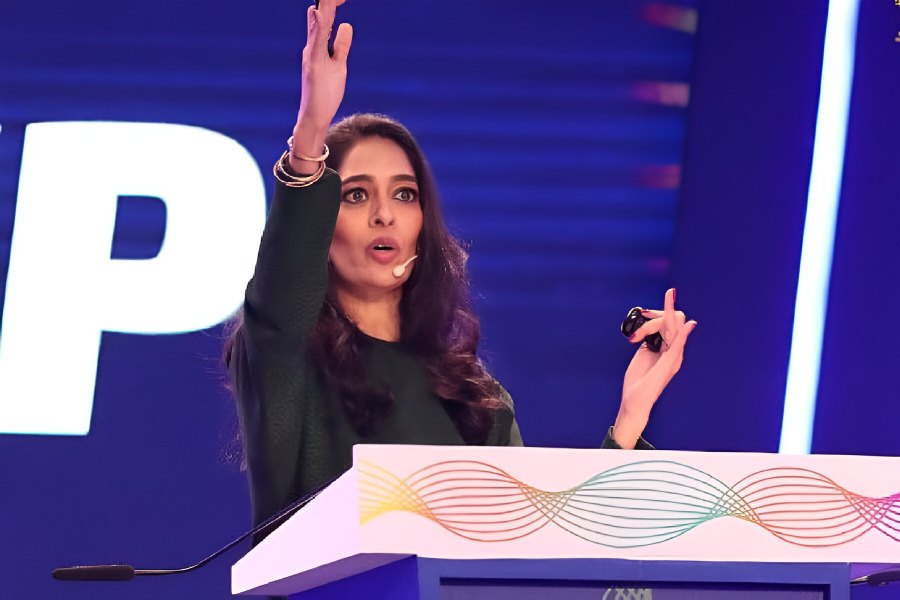Delhi’s Dhoomimal Art Gallery has opened up in their renovated avatar with ‘Outliers, Rebels, Disruptors: Delhi Silpi Chakra, 70 Years On’. The showcase features works of artists associated with the Silpi Chakra ensemble such as Amarnath Sehgal, B.C. Sanyal, J. Swaminathan, K.S Kulkarni, Ram Kumar, Rameshwar Broota, Sailoz Mookherjea and Satish Gujral.
Conceptualised by FAQ Art and curated by Eka Archiving, the exhibition that is on till July 31. On display are the works of the artists’ collective that was formed in 1949 with the slogan “art illuminates life” and the objective of providing a platform for artists beyond what the acceptable standards were back then. Founded by artists whose lives were ripped apart by Partition (such as Sanyal, Kanwal Krishna, Kulkarni and Dhan Raj Bhagat), “the Chakra became a haven of free thinkers and new ideas in the stilted cultural milieu of 40s New Delhi. These artists gave root to modernism in the capital’s art circles and laid the foundation for the commercial gallery system in India. The Silpi Chakra Gallery founded in 1949, later became the Dhoomimal Gallery,” said the curatorial note for his exhibit.

K G SUBRAMANYAN’s Unsigned Watercolour and paper cut-outs

Rameshwar Broota’s Christ, 1967
“The Chakra also sought to create an agency through which the sale of works by its members could be organised on a commercial basis. Thus, the Silpi Chakra Art Gallery, the first of its kind in India, was inaugurated on October 7, 1949 on the mezzanine floor of Dhoomimal Dharamdas in Connaught Place, with the assistance of its proprietor, the late Ram Babu,” said P.N. Mago, co-founder of Delhi Silpi Chakra.
Therefore it is only apt that the gallery relaunches as it reaches out to a newer generation of art enthusiasts with this timely restrospective that delves into a key period of India’s modern art movement.
The exhibit can be virtually accessed on https://www.dhoomimalgallery.com.
Rewinding...
The Delhi Silpi Chakra was founded by B.C. Sanyal, Kanwal Krishna, K.S. Kulkarni and Dhan Raj Bhagat in 1949 in search of hope and a space for art and artists in the capital city. Given the rupture caused by Partition, and the suffering experienced by many refugee-artists, the creation of the Chakra was essential for culture to emerge again. The Shankar Market space in Delhi became an “adda”, for artists, musicians, writers, poets, dancers, intellectuals and art-lovers. The group played a crucial role in creating the critical mass that created and furthered the cultural and intellectual landscape in Delhi. The Silpi Chakra was vital in building an all encouraging vibrant atmosphere, ideal for intellectual, and artists’ pursuits as a space for not just cultural evolution but revolution(s). The Delhi Silpi Chakra, unlike the Bengal School or the Bombay Progressives, did not share a stylistic ideology, sharing, rather, a desire to make art accessible to the masses; to create a democratic platform for ideas and culture to flourish.
With an idea to take art to the masses, Delhi Silpi Chakra artworks were sold to lawyers, teachers, writers, poets, musicians, actors etc. Exhibitions were held in “mohallas” of Karol Bagh, Chandni Chowk, Jantar Mantar, and the grounds of the Masonic Hall. Eventually the Silpi Chakra settled at 19-F Shankar Market.
Artists from different parts of the country were invited to take part in events, with the group even coming up with a novel scheme of renting artworks. The group functioned as an art training centre, with regular classes taken by established artists; at the same time, it became a space to promote younger artists. Some of the Silpi Chakra’s art curriculum was designed by J Swaminathan. At the same time poets and writers like Nirmal Verma, Prayag Shukla, musicians like the Dagar brothers, art critics and historians like K. B. Goel, Charles Fabri, and Richard Bartholomew frequented the Chakra. Gradually, artists’ lives became busier, the collective gave way to increased individuality and newer avenues presented themselves; the Delhi Silpi Chakra dwindled: all that now remains is the painted signboard at the bottom of the stairs at 19-F Shankar Market.
Pictures: Courtesy of gallery











